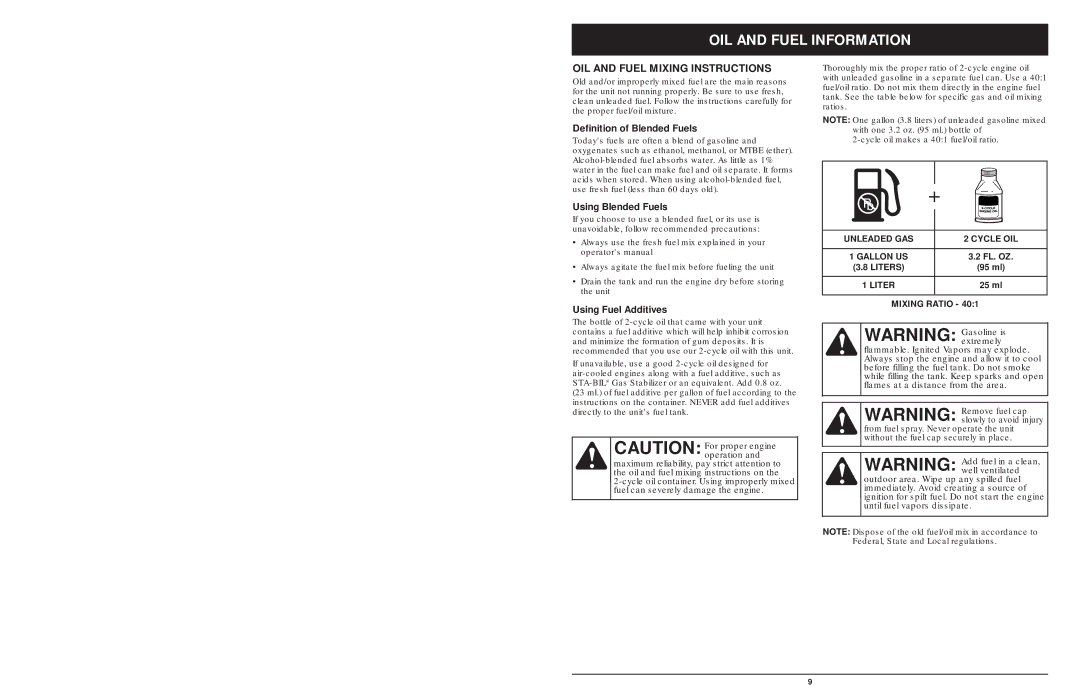
OIL AND FUEL INFORMATION
OIL AND FUEL MIXING INSTRUCTIONS
Old and/or improperly mixed fuel are the main reasons for the unit not running properly. Be sure to use fresh, clean unleaded fuel. Follow the instructions carefully for the proper fuel/oil mixture.
Definition of Blended Fuels
Today's fuels are often a blend of gasoline and oxygenates such as ethanol, methanol, or MTBE (ether).
Using Blended Fuels
If you choose to use a blended fuel, or its use is unavoidable, follow recommended precautions:
•Always use the fresh fuel mix explained in your operator's manual
•Always agitate the fuel mix before fueling the unit
•Drain the tank and run the engine dry before storing the unit
Using Fuel Additives
The bottle of
If unavailable, use a good
(23 ml.) of fuel additive per gallon of fuel according to the instructions on the container. NEVER add fuel additives directly to the unit's fuel tank.
CAUTION: For proper engine operation and
maximum reliability, pay strict attention to the oil and fuel mixing instructions on the
Thoroughly mix the proper ratio of
NOTE: One gallon (3.8 liters) of unleaded gasoline mixed with one 3.2 oz. (95 ml.) bottle of
|
|
|
|
|
|
|
|
|
|
|
|
| + |
| |
|
|
|
|
| |||
|
|
|
|
|
|
|
|
|
|
|
|
|
|
|
|
|
|
|
| ||||
UNLEADED GAS |
|
| 2 CYCLE OIL | ||||
|
|
|
| ||||
1 GALLON US |
|
| 3.2 FL. OZ. | ||||
(3.8 LITERS) |
|
| (95 ml) | ||||
|
|
|
|
|
| ||
|
| 1 LITER |
|
| 25 ml | ||
|
|
|
|
|
|
|
|
MIXING RATIO - 40:1
WARNING: Gasoline is extremely
flammable. Ignited Vapors may explode. Always stop the engine and allow it to cool before filling the fuel tank. Do not smoke while filling the tank. Keep sparks and open flames at a distance from the area.
![]()
![]() WARNING: Remove fuel cap slowly to avoid injury
WARNING: Remove fuel cap slowly to avoid injury
from fuel spray. Never operate the unit without the fuel cap securely in place.
WARNING: Add fuel in a clean, well ventilated
outdoor area. Wipe up any spilled fuel immediately. Avoid creating a source of ignition for spilt fuel. Do not start the engine until fuel vapors dissipate.
NOTE: Dispose of the old fuel/oil mix in accordance to Federal, State and Local regulations.
9
